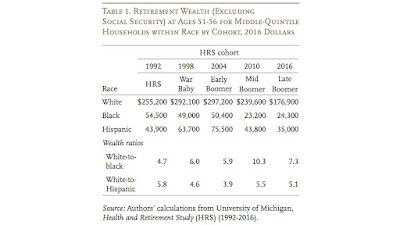 |
Senator Leahy
|
Patrick Leahy, the Chairman of the Senate Appropriations Committee, has released a
draft Fiscal Year (FY) 2022 appropriations bill (see page 293) covering Social Security. The top line number in his version is virtually the same as the bill that has already passed the House of Representatives, a $1 billion increase for Social Security over FY 2021.
As is normally the case, the draft report on the bill, an explanation of the bill which isn't officially enacted, contains recommendations for the Social Security Administration. These aren't binding but agencies take them seriously. Here's what's in the draft Senate bill for Social Security:
Delayed Disability Payments.—The delayed payment of Social Security
Disability Insurance claims can create a significant burden
on claimants. The Committee requests a briefing within 90 days of
enactment on the issues that can result in delayed payments, and
the polices SSA has implemented, or has considered, to streamline
the disability payments’ process.
Disability Hearing and Initial Claims Backlogs.—The Committee
commends SSA for the progress it has made reducing the average
disability hearing processing time and the disability hearing backlog.
The Committee recommendation combined with investments in
recent years will help SSA stay on schedule to eliminate the backlog
in fiscal year 2022 and further reduce the average disability
hearing processing time. At the same time COVID–19 has created
significant challenges for SSA, and has contributed to a growing
backlog of initial disability claims. The Committee recommendation
will support additional hires for Disability Determination Services
to help address the growing backlog and an estimated increase in
initial claims. The Committee requests a briefing within 60 days of
enactment, and quarterly thereafter, on its progress towards reducing
initial disability claim and hearings processing times and backlogs.
Field Offices Closures.—The Committee remains concerned about
decisions to permanently close field offices and the impact on the
public. The Committee encourages SSA to find an appropriate balance
between in-person field office services and online services for
beneficiaries. While the SSA’s Inspector General reviews decisions
to close field offices, the Committee directs SSA to take every action
possible to maintain operations at the offices under review.
Occupational Information System [OIS].—The Committee is
aware that SSA continues to operationalize OIS using BLS ORA
data, O*NET, and other DOL-derived occupational statistics. The
Committee commends SSA’s progress in implementing OIS, and directs
SSA to provide an update in writing to the Committees on
Appropriations and Finance within 60 days of enactment detailing
the status of implementation, to what extent OIS is fully operational,
a timeline for moving from the Dictionary of Occupational
Titles entirely to OIS, and an action plan to accomplish said
timeline.
This is almost completely different from the House version which discusses the regulations allowing Administrative Appeals Judges to hold hearings, judicial independence of ALJs, backlogged claims processing, the attorney fee cap, telework and telephone hearings. The differences between the two draft reports will be sorted out in the legislative process so there will be one final report on the bill.
The current continuing resolution that keeps Social Security and other agencies running ends in early December. I don't think that appropriations have been as contentious this year as most. I hope we can get something passed by that early December deadline.






